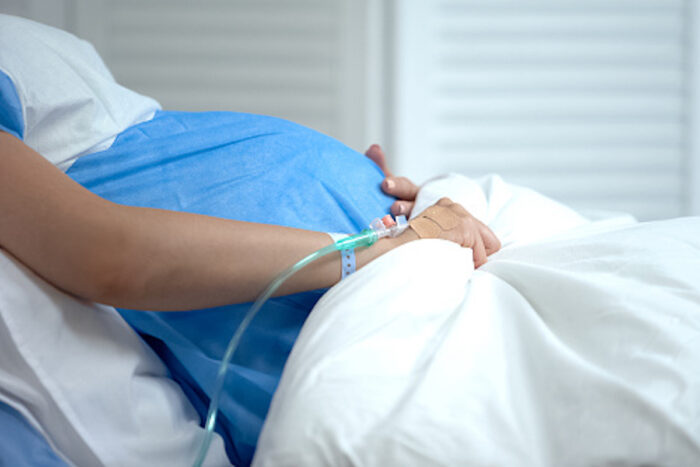Monitoring labor in pregnancy aim of grant to develop imaging technology
Researchers receive funding from Bill & Melinda Gates Foundation to help develop low-cost, bedside equipment for people in underserved regions
 Getty Images
Getty ImagesResearchers at Washington University School of Medicine in St. Louis have received three grants totaling more than $6.8 million to advance research on a novel imaging system to monitor uterine contractions. The electromyometrial imaging system, called EMMI, was invented and developed at Washington University.
Monitoring uterine contractions during labor is critical for safeguarding maternal health and preventing preterm births, the world’s leading cause of death in children under age 5. Toward that end, researchers at Washington University School of Medicine in St. Louis plan to develop a portable, inexpensive and noninvasive 3D imaging system designed to monitor labor progression.
The researchers have received more than $1.1 million in new grant funding from the Bill & Melinda Gates Foundation to help make uterine mapping technology available globally in low-income clinics that lack basic resources in their labor and delivery rooms.
“Women and children in poor settings experience more adverse health complications related to birth,” said Yong Wang, PhD, principal investigator and an associate professor of obstetrics & gynecology in the Department of Obstetrics & Gynecology‘s Division of Clinical Research. “Understanding patterns in uterine contractions can help detect labor dysfunction and allow for timely clinical intervention.”
Each year, about 15 million babies are born before 37 weeks’ gestation — the point at which a pregnancy is considered full-term — and the number of premature births is increasing, according to the World Health Organization (WHO). One million children die annually from complications of preterm birth, yet three-quarters of such deaths are believed preventable with access to basic health care and updated technologies.
Babies who survive often endure a lifetime of poor health, including learning and developmental disabilities, vision and hearing impairments, and problems with brain and lung function.
The WHO also estimates that 810 women die each day from causes related to pregnancy and childbirth. Most of these deaths occur in poor countries and likely could be prevented with proper care and resources.
“Infant and maternal health outcomes are closely connected,” said Wang, also an associate professor of radiology, and of electrical and systems engineering at the McKelvey School of Engineering. “Early intervention can save the lives of mothers and their babies from complications related to labor and delivery.”
The 14-month grant was awarded after a larger and costlier version of the researchers’ uterine contraction imaging system was featured on the cover of Science Translational Medicine in 2019. The foundation aims to help develop and test novel technologies that can be used in birthing centers in underdeveloped regions.
To make the technology inexpensive and portable, the researchers plan to use ultrasound instead of MRI, and substitute wire electrodes with printed electrodes, among other modifications. Printed electrodes are disposable, inexpensive electrical conductors that, for this purpose, measure uterine contractions.
The technology, called Electromyometrium Imaging, is a result of a collaboration between researchers in the university’s Department of Obstetrics & Gynecology and the Department of Electrical and System Engineering.






